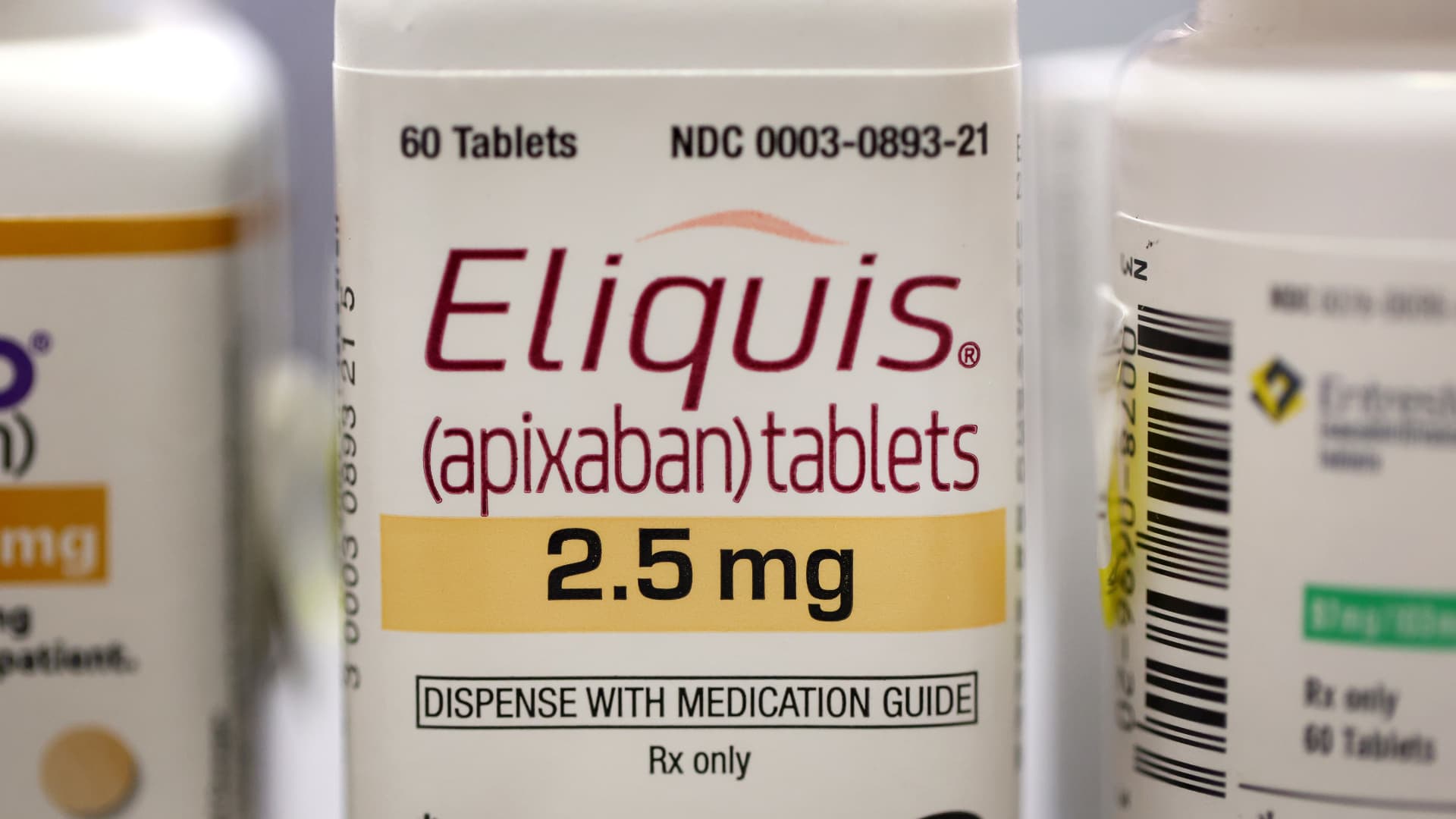In this photo illustration, the availability of Eliquis at the New City Halsted Pharmacy in Chicago signals a significant development in Medicare’s effort to negotiate drug prices with manufacturers. The goal is to make expensive treatments more affordable for older Americans. However, the pharmaceutical industry strongly opposes this process. Although these drug price negotiations are expected to impact manufacturers, analysts suggest that the financial effects will be less pronounced in the initial round. This is due to other factors already affecting the revenue and profits of the listed drugs, such as competition from branded medications and impending patent expirations.
Mara Goldstein, Managing Director of Mizuho Securities, stated that the negotiations’ commercial impact appears limited for this initial list of drugs. However, analysts believe that future rounds of negotiations could change this scenario. The Biden administration recently released the highly anticipated list of drugs, initiating a lengthy negotiation process set to conclude in August 2024. The reduced prices resulting from these negotiations will not take effect until January 2026.
The list includes drugs with the highest Medicare Part D spending, which covers prescription medications, from June 2022 to May 2023. This comprises blood thinners from Bristol-Myers Squibb and Johnson & Johnson, as well as diabetes drugs from Merck and AstraZeneca. However, there is uncertainty regarding whether the negotiated prices will be implemented. Some drugmakers, including those with medications on the list, have filed lawsuits in federal courts to halt the negotiations. This legal dispute could escalate to the Supreme Court if split appellate court decisions arise. Additionally, the U.S. Chamber of Commerce, a major lobbying group in the United States, is seeking to halt negotiations through a preliminary injunction.
The upcoming negotiated prices in 2026 are expected to have minimal financial impact on drugs facing patent expirations and branded competition. Merck’s Type 2 diabetes drug, Januvia, for example, is projected to lose exclusivity shortly after the negotiated prices take effect. The majority of Januvia’s volume is expected to shift to cheaper generic alternatives upon patent expiration. Similarly, AstraZeneca’s Type 2 diabetes drug, Farxiga, and other drugs on the list with later patent expirations may experience limited impact from the negotiated prices. Johnson & Johnson’s blood thinner, Xarelto, and Novartis’ heart failure drug, Entresto, will likely only be influenced by negotiated prices for one year before generic competition diminishes their effect.
Eliquis, a blood thinner co-developed by Bristol-Myers Squibb and Pfizer, is slightly more susceptible to the impact of negotiated prices due to its patent expiring in 2028. However, analysts believe this risk can be managed. Branded competition is another factor that could minimize the impact of negotiated prices. Therefore, the extent to which Medicare can negotiate lower prices raises questions.
An important point to consider is that many of the drugs on the list are not the primary drivers of revenue and profits for their respective companies. For instance, Januvia contributes less to Merck’s overall business and stock compared to drugs like Keytruda and Gardasil. While Januvia generated $4.5 billion in revenue last year, Keytruda raked in $21 billion.
Looking ahead, the next round of negotiations in 2028 and beyond will focus on drugs covered by Medicare Part B. This category includes more specialized medications administered by healthcare providers instead of pharmacies, such as biologic medications like Keytruda. Analysts predict that these negotiations will have a more significant impact since biologics tend to be more expensive and have a greater influence on a company’s earnings and growth.
Although the immediate impact of drug price negotiations may seem muted, they are expected to have long-term consequences for manufacturers. Negotiated prices diminish a company’s pricing power over their treatments, potentially discouraging further investment in a drug to expand its indications for different diseases. As a result, drug development strategies may shift over time.
Denial of responsibility! VigourTimes is an automatic aggregator of Global media. In each content, the hyperlink to the primary source is specified. All trademarks belong to their rightful owners, and all materials to their authors. For any complaint, please reach us at – [email protected]. We will take necessary action within 24 hours.


